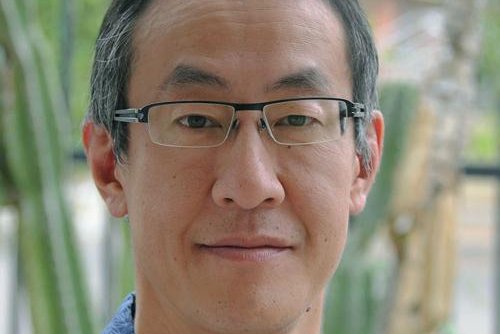Takeshi Inomata, an anthropologist at the University of Arizona, led a team to discover a new Mayan site at Aguada Fenix in Tabasco, Mexico. The discovery was announced in Wednesday's edition of the journal Nature. Photo courtesy of the University of Arizona.
June 3 (UPI) -- Archaeologists in Mexico said Wednesday they have discovered a Mayan site that dates back to 1000 B.C., believed to be the oldest monumental construction ever found that is connected to the civilization.
To find the location, the researchers used an aerial lidar survey, which uses a remote-sensing technique called light detection and ranging to create a digital elevation model of the bare-surface terrain that is hidden by trees in dense forest areas.
The area included a 50-foot high artificial plateau more than 4,590-feet in length with nine expansive causeways. The age was estimated with Bayesian analysis radiocarbon dating.
The discovery was made public Wednesday in the latest edition of the journal Nature.
"To our knowledge, this is the oldest monumental construction ever found in the Maya area and the largest in the entire pre-Hispanic history of the region," the researchers, led by University of Arizona Anthropologist Takeshi Inomata, said.
"Although the site exhibits some similarities to the earlier Olmec center of San Lorenzo, the community of Aguada Fenix probably did not have marked social inequality comparable to that of San Lorenzo. Aguada Fenix and other ceremonial complexes of the same period suggest the importance of communal work in the initial development of Maya civilization," they said.
Inomata said the time the Aguada Fénix was built marked a gap in power among the Mayas, coming after the decline of San Lorenzo and before the rise of another Olmec center, La Venta. Researchers believe that period resulted in an exchange of new ideas, such as construction and architectural styles in different regions of southern Mesoamerica.
He said the extensive plateau and the large causeways suggest the monument was used by many people and not just for the elite.
"It's not just hierarchical social organization with the elite that makes monuments like this possible," Inomata said in a statement. "This kind of understanding gives us important implications about human capability and the potential of human groups. You may not necessarily need a well-organized government to carry out these kinds of huge projects. People can work together to achieve amazing results."















